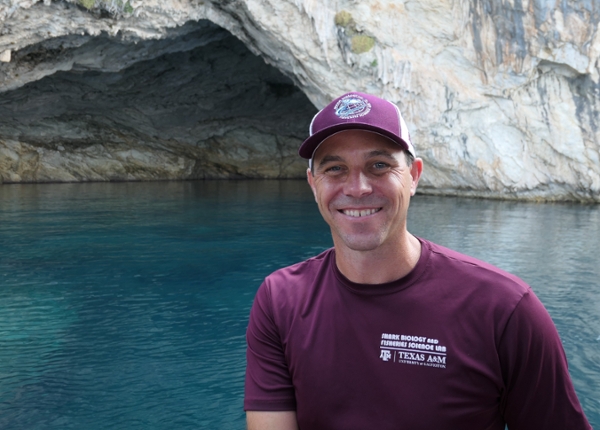TAMUG Professor Awarded Fulbright Fellowship in New Zealand
January 25, 2019
Tweet
Dr. David Wells, associate professor in the Department of Marine Biology at Texas A&M University at Galveston.
By Patrick Temperilli, Academic Affairs
“It’s exciting to be selected to do it, things just came together at the right time with a funded project in the Pacific and the Fulbright,” Dr. Wells said.
About the Fellowship
The Fulbright Program, created in 1946 by Senator J. William Fulbright and sponsored by the U.S. Department of State’s Bureau of Educational and Cultural Affairs, is the U.S. government’s international exchange program with partner countries to grow knowledge, enhance understanding and broaden perspectives in a multitude of scientific and humanitarian fields around the globe.The New Zealand National Institute of Water and Atmospheric Research, or NIWA, will play host for Dr. Wells over the course of his fellowship.
A crucial component of this fellowship is the building of relationships, especially since Dr. Wells will only be in New Zealand for a few months. By connecting with port samplers, observers, fishermen and scientists, Dr. Wells hopes to establish longstanding rapport in order to continue collecting and analyzing samples once he returns to the United States.
On the Tails of Tuna
The Pacific Bluefin Tuna are born off the coast of Japan. A sizeable portion of them migrate during their first year to the eastern Pacific Ocean off the coast of California, where they spend a number of years feeding in the productive waters before moving back to the waters off Japan and Taiwan to spawn.“But then there’s this third piece, this extra piece where they’re getting caught in New Zealand waters as well,” said Wells. “One of the biggest unknown components of the Pacific Bluefin Tuna’s movement and migration patterns, at least in the Pacific Ocean, is this New Zealand connection.”
“We are trying to get samples from these fish in New Zealand to learn more about their movements such as where are they coming from, how long are they staying, and potentially where they have been,” Wells said.
This kind of scientific work requires the study of the otolith, a small ear bone of fishes that is invaluable in the application of chemical analyses, in which both Dr. Jay Rooker, Texas A&M University System Regents Professor in TAMUG’s Department of Marine Biology, and Dr. John Mohan, assistant research scientist working in Dr. Wells’ lab, are involved and serve as co-principal investigators (PI’s) on the project.
An Eye on the Future
Despite establishing a dialogue on the data being seen from tuna samples, there’s every chance that this project and its relationships can lead to something more. “An added benefit of the opportunity is the individuals that I’m working with are also shark researchers, so we are going to try and spin up some new projects while I’m there,” Wells said.“The Bluefin Tuna project is great because it provides the initial project and connection, but broad overall questions on marine fishes and sharks should open new opportunities for our lab and others at TAMUG.”
###
Media contact:temperilli@tamug.edu, 409-740-4783